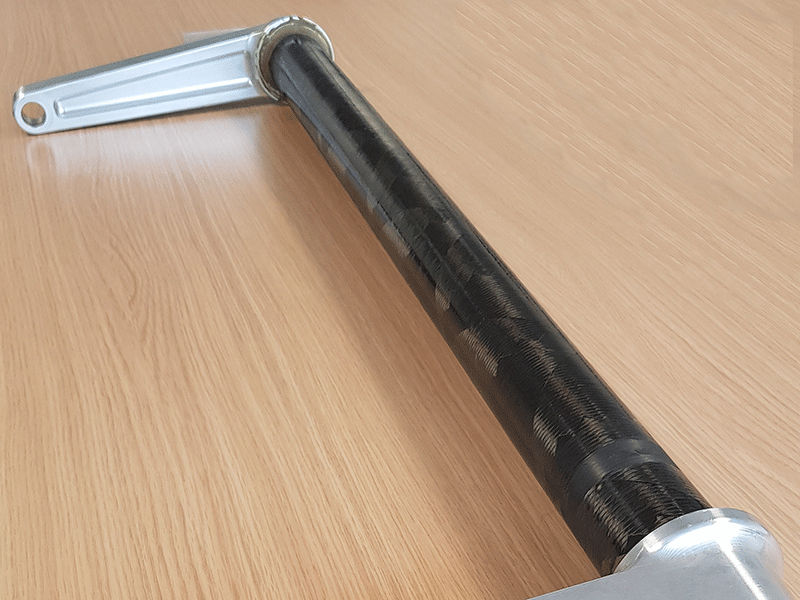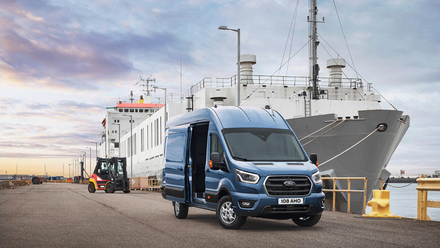New composite truck suspension part hangs lighter
A composite anti-roll bar for the automotive sector could be 30% lighter than current commercial alternatives, researchers at the University of Sheffield, UK, and two South Yorkshire firms claim.

Tubular steel is the industry standard for high-performance stabiliser bars, an integral part of a vehicle’s suspension system. The new component is a carbon-fibre-reinforced plastic (CFRP) hybrid composite, joined with an adhesive and metallic end fittings.
The University’s Advanced Manufacturing Research Centre (AMRC), part of the High Value Manufacturing Catapult, worked with engineering sub-contractor Tinsley Bridge and engineering designers at Performance Engineered Solutions (PES) on the Lightweight Metal Composite Hybrid (LiMeCH) project.
Russell Crow, Tinsley Bridge Director of Engineering and Development, says, ‘One of the project objectives was to develop lightweight composite components which covered the known range of spring steel parts, therefore dependent on the loading and performance characteristics required, different filaments and resin systems may be deployed to achieve the results required.’
Tinsley Bridge previously worked with the AMRC on the Lightweight Composite Suspension Components project, which developed the carbon composite. The LiMeCH project, with Innovate UK funding, sought to improve the metal-to-carbon-fibre bonded joint.
PES used finite element analysis (FEA) before manufacturing to test whether the designs could handle the same loads as the equivalent steel part.
The AMRC Composite Centre has made four prototypes using its MF TECH filament winding system. Filaments of carbon, impregnated with resin, were wound onto a rotating mandrel to form the required shape. PES then inspected the inside of the bar using computerised tomography scanning and an in-house light scanning system. The metallic-to-composite bond now passes the industry fatigue requirements.
Crow shares, ‘During the project we have put parts through cyclical thermal loading, subjected parts to controlled impact damage and placed prototype components beneath test vehicles and run them in aggressive environments for sustained periods of time to build up a bank of data on how the assembly and its constituent parts performed.
‘Encouragingly, we did not expose any of the existing failure modes of traditional spring steel components, however, we did validate a number of new failure modes...and developed methods to eliminate or significantly reduce their severity during the project.’
Craig Atkins, Research Engineer at the AMRC Composite Centre, says, ‘The [bars] we prototyped are designed for trucks, trains and military vehicles, but it can be scaled-down – there is no reason why this technology can’t be applied to electric vehicles and smaller vans used by courier services.’
Crow is confident of its commercial viability. ‘While the current price of a prototype is greater than a spring steel equivalent, we are able to achieve other properties which simply cannot be achieved in steel. We therefore believe that the first customers to adopt this product are those looking for substantial weight savings in their suspension components, and/or those with challenging packaging envelopes in their vehicles where they cannot accommodate the bend radii required for a spring steel product.’
Crow says that after further testing for both anti-roll bar and torsion bar specimens, the company will be asking vehicle manufacturers to run development parts.


